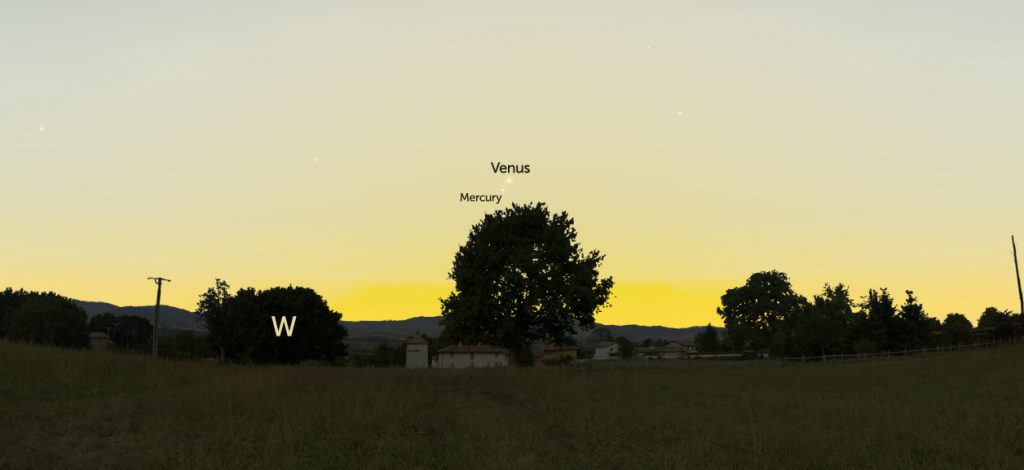Written by Daniel Mannina
May 15, 2020

NO SMILEY FACE MOON, NO PROBLEM
Light pollution can make observing stars in a large urban area tricky with the naked eye or even with binoculars. However, many planets appear brighter in the sky than more distant stars. Planets are bright enough to offer the opportunity to observe celestial bodies, even from cities and suburbs.
The Smiley Face Moon, a supposed alignment of Venus, Jupiter and a crescent moon into a smiley face on May 16, 2020 seems like the perfect backyard star gazing opportunity. Unfortunately, it’s a case of “fake news.”
A quick review of the sky charts shows these celestial bodies will not be in the same area of the night sky despite all the online hype. But not all is lost for amateur astronomers. According to FIU experts, there is another upcoming phenomenon that is observable without a telescope.
LOOK
Planets are constantly changing location in the sky due to their orbit around the sun. Certain planets sometimes appear in the evening sky and sometimes in the morning sky. This well-understood and predictable yearly dance has been observed for centuries.
“We are driven by a deep-rooted need to look up,” FIU astrophysicist, author and recording artist, Fiorella Terenzi said. “It was the sky that allowed humankind to survive. By looking up, we derived agriculture, navigation, time, art, music. Faraway dots of light are able to guide, comfort and inspire us.”
When observing the night sky, be sure to turn lights down as low as possible and allow your eyes to adapt to the dark. Always be prepared for stargazing by using the Stocker AstroScience Center Clear Sky Chart.
Some summer dates to look out for include:
- July 4: Shortly after sunset a penumbral lunar eclipse (moon passes through the outer shadow of Earth) will be visible in North America.
- July 15 and 20: Saturn and Jupiter take center stage. They will both be in opposition (closest to Earth in their orbits). Jupiter opposition is July 14, Saturn is July 20.
- Aug. 12 and 13: The peak of the Perseid meteor shower. Unlike in 2019, when the full moon made viewing difficult, this year the second quarter moon will only be in the sky for part of the night, allowing viewers to see over 50 meteors per hour.
LISTEN
Terenzi is one of a few members of the FIU Stocker AstroScience Center who also happens to be a musician. Terenzi recommends the following playlist:
Terenzi’s own Music from the Galaxies and fellow FIU astronomer James Webb’s Reaching for the Stars are also worth a listen.
Don’t forget to share pictures and observations on social media with @FIUCASE.
Looking to join a group that shares a passion for the universe? Southern Cross Astronomical Society brings the stars to everyone through their membership program and scholarships for FIU students.
The Stocker AstroScience Center gives stunning views of stars clusters, galaxies, planets, moons and more. Take a guided journey through celestial images captured by South Florida’s only research-grade telescope and find new ways to engage the cosmos. Bookmark FIU@Home for more of the universe.